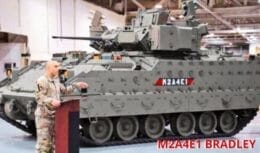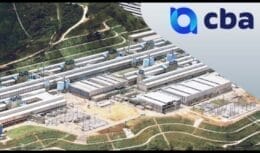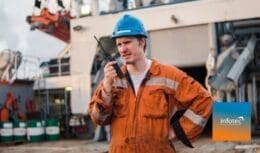
Guanabara Bay is full of ship scraps. The removal of stranded ships in Guanabara Bay, in Rio de Janeiro, began in 2012.
Rio de Janeiro – In the waters of Guanabara Bay, hundreds of metal and wooden skeletons rest forgotten for decades. The polluted source of 381 square kilometers of water mirror, is a cemetery of ships. STF hits hammer and Rio Government will have to pay R$ 2 billion in compensation for expropriation of land at the Manguinhos Refit refinery
Read also
- More than 200 vacancies for candidates without experience! Ambev, the largest beverage company in the world, starts recruiting and selecting for its 2020 Internship Program
- Vacancies for technicians and engineers in construction works in Porto in Espírito Santo da Imetame, today August 24
- Petrobras begins sale of five oil fields, gas pipelines and terminal in Espírito Santo
Carcasses are a risk to the environment and to ship traffic in Guanabara waters. There are on site, fully or partially submerged, vessels, carcasses, and small, medium and large boats. Some have been there for 50 years. There are cases where there are only pieces of the boat, with only one part out of the sea, sometimes not even that.
Mostly, just scrap of what used to be the vessels were abandoned by their owners and form a kind of nautical cemetery in Guanabara Bay.
In 2012, the secretariat, in partnership with the State Institute of the Environment (Here) and the Ministry of Fisheries and Aquaculture, took the initiative to put an end to these “ghosts of the sea”, which represent a high risk of environmental accidents and for naval traffic.
Work began along the São Lourenço Canal, between Niterói and São Gonçalo, in the Metropolitan Region. The first carcasses were disposed of by the state government.
The lifting and final destination of most of the material, such as more than 100 tons of steel, wood and glass fibers, sold to metallurgical, steel and recycling companies, divided into lots, would at the time be the responsibility of the company Tanquefer-Comercial by Tanques Ltda, from Bangu, and by Nelson Batista Ruy from São Paulo, who won auctions.
Whose responsibility is it to put an end to this “graveyard” of ships in Guanabara Bay?
The State Institute for the Environment (Inea) informed that inspection of vessels is the responsibility of the Port Authority and that the body is only activated when environmental damage is found.
The Captaincy of the Ports of Rio, in turn, informed that it carries out naval inspection activities daily, verifying the navigation safety standards and the prevention of water pollution.
After identifying the boats, the Navy looks for the owners and, if the owners do not comment or present a plan for removal, they go to auction. Although they are mostly just shells, they are worth money because of the iron and other materials that make up the boats.














Odebrecht back in the game:…
Comperj Public Hearing Out! All…
Brazilian engineering company opened…
Porto do Açú back…
Comperj and the verdict: Leaders…
Ugly style, old engine, weak etios
Old weak engine
Canada produces 2% of the world’s niobium…
With this communist government and the…
The intention is good, unfortunately with this…
Congratulations Roberta for the excellent article. Demonstrated knowledge…
Do you really think the profits went to…
Thanks for the observation Gladison, I corrected it and now…